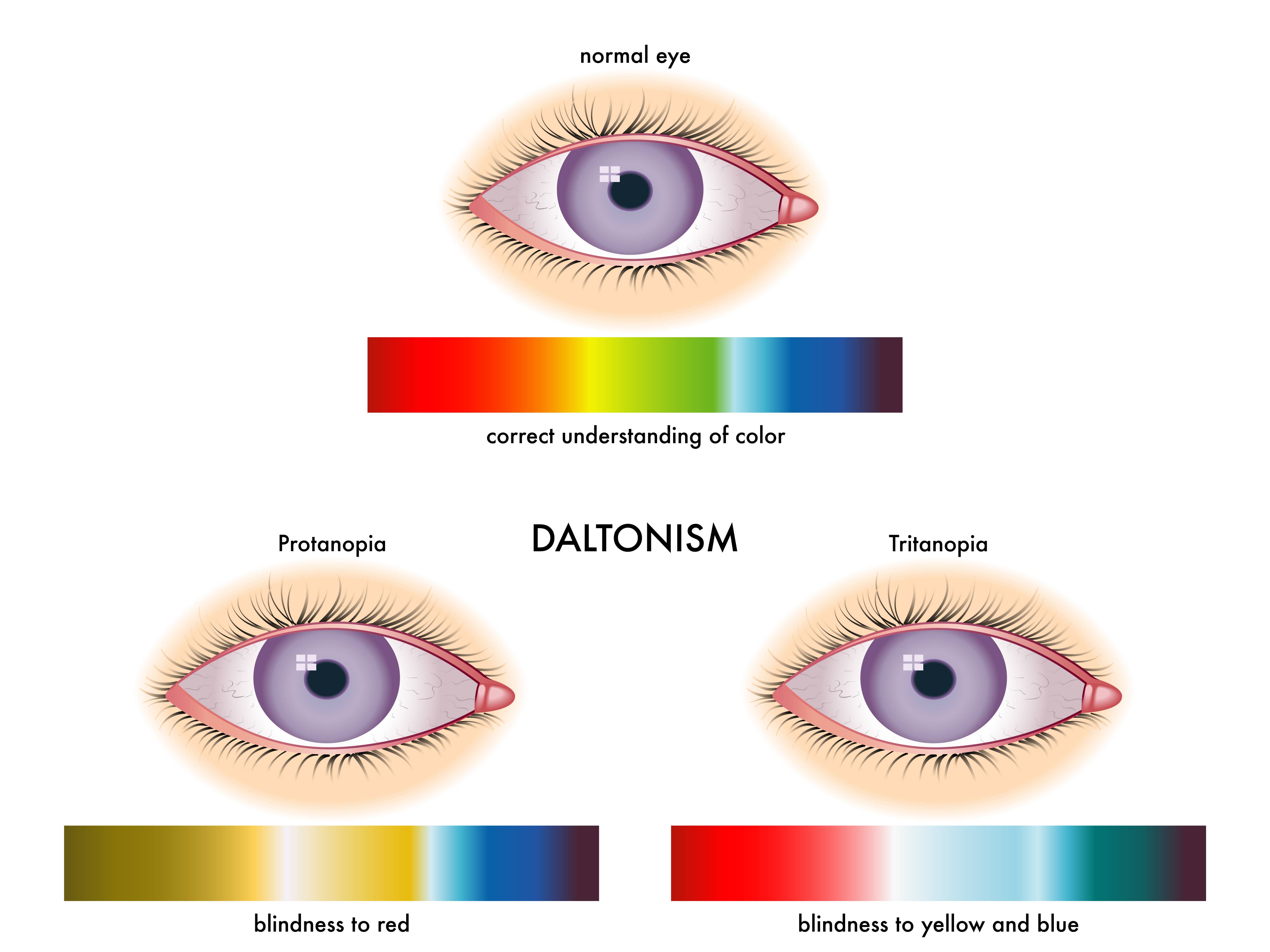Imagine a world where a ripe strawberry looks like a dull gray, and the vibrant hues of a sunset are replaced by a muted palette of browns and grays. This is the reality for millions of people living with color blindness, a condition that affects their perception of colors.

Image: www.babezdoor.com
Color blindness, also known as color vision deficiency, is an inherited condition that prevents individuals from seeing certain colors or seeing them accurately. While the term “color blindness” suggests a complete absence of color perception, most people with this condition experience a diminished ability to distinguish between specific shades. Understanding how color blindness affects vision is not just a matter of curiosity; it’s crucial for fostering empathy, promoting inclusivity, and designing accessible environments for everyone.
The Science Behind Color Vision
To grasp the intricacies of color blindness, we need to delve into the mechanics of how our eyes perceive color. The human eye contains light-sensitive cells called cones, which are responsible for color vision. We have three types of cones, each sensitive to a different range of wavelengths:
Types of Cones
- Short-wavelength cones (S cones): These cones are most sensitive to blue light.
- Medium-wavelength cones (M cones): These cones are most sensitive to green light.
- Long-wavelength cones (L cones): These cones are most sensitive to red light.
When light enters the eye, these cones send signals to the brain, which interprets these signals as color. Proper color vision depends on the balanced functioning of all three types of cones. However, in individuals with color blindness, one or more of these cones may be missing or malfunctioning, resulting in an altered perception of color.
Types of Color Blindness
Color blindness is broadly classified into three main types:

Image: www.pinterest.com
1. Red-Green Color Blindness (Protanopia & Deuteranopia)
This is the most common type of color blindness, affecting approximately 1 in 12 men and 1 in 200 women. Individuals with red-green color blindness have difficulty distinguishing shades of red and green.
- Protanopia: This type involves a complete absence of red cones, causing individuals to perceive red as a darker shade of green.
- Deuteranopia: In this type, the green cones are absent, leading individuals to perceive green as a darker shade of red.
2. Blue-Yellow Color Blindness (Tritanopia)
This type is less common than red-green color blindness. Individuals with blue-yellow color blindness have difficulty distinguishing blues and yellows, often perceiving them as shades of green. They may also have trouble seeing shades of pink and purple.
3. Monochromacy
This rare condition is characterized by the complete absence of two or all three types of cones. Individuals with monochromacy see the world in shades of gray or a limited range of colors. Their vision is similar to that of a black and white photograph.
What Does a Color Blind Person See?
The experience of color blindness varies greatly depending on the type and severity of the condition. Here’s a glimpse into the visual world of individuals with different types of color blindness:
Red-Green Color Blindness
Individuals with red-green color blindness see reds and greens as muted versions of these colors or as a combination of shades, such as brown, orange, or yellow. This can make it challenging to distinguish between red and green traffic lights, read color-coded maps, and enjoy certain artistic works.
Blue-Yellow Color Blindness
People with blue-yellow color blindness often have trouble distinguishing shades of blue and yellow, seeing them as shades of green or gray. For instance, a bright blue sky might appear as a pale green.
Monochromacy
Individuals with monochromacy see the world in shades of gray or a limited range of colors. They may experience difficulty with tasks that require color discrimination, such as selecting clothes or identifying objects by color.
Living with Color Blindness
While color blindness can pose challenges in daily life, individuals with this condition often develop remarkable strategies to navigate their world. Some common strategies include:
1. Using Contextual Clues
Color blind individuals can use context to figure out the colors of objects. For example, they might know that a stop sign is red, even if they can’t see the red color clearly.
2. Relying on Other Sensory Inputs
Color blind individuals often rely on other senses, such as touch and smell, to identify objects. For example, they might feel the texture of a fruit to determine its color or smell the aroma of a flower to guess its color.
3. Using Color-Correcting Tools
Technology has developed tools that can help individuals with color blindness perceive colors more accurately. These tools include glasses, apps, and color filters that adjust the wavelengths of light to make colors more distinct.
The Importance of Awareness and Inclusivity
It’s essential to understand that color blindness is a common condition, and individuals living with it are capable of living full and productive lives. Raising awareness about this condition is crucial for promoting inclusivity and creating a world where everyone can participate equally.
What Does A Color Blind Person See
Conclusion
Color blindness challenges our understanding of color perception and highlights the diversity of human experiences. By acknowledging color blindness and its impact, we can create a more inclusive and accessible world for everyone. Let’s celebrate the unique ways in which individuals perceive color and appreciate the beauty of the spectrum of human vision.






